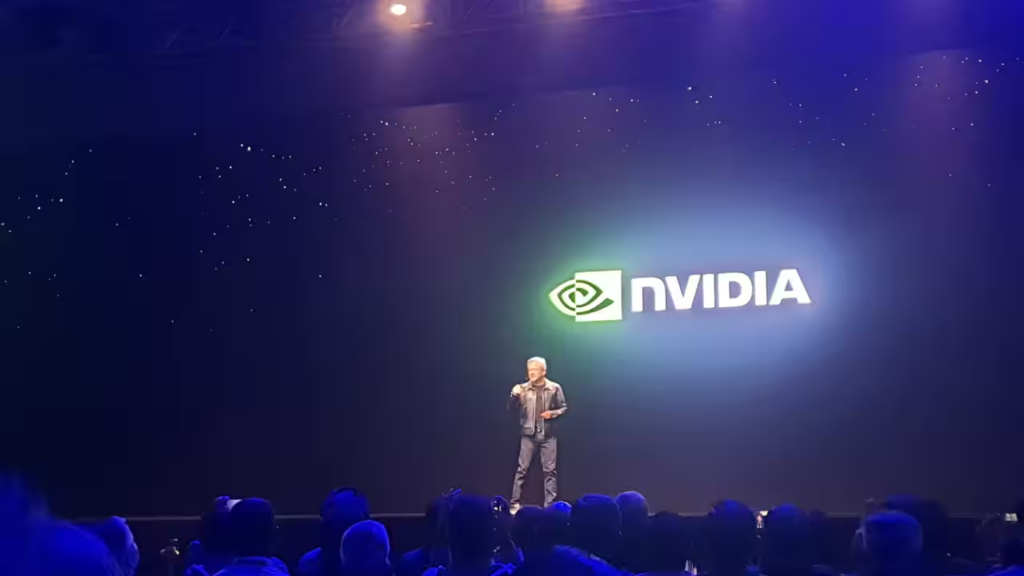As the field of artificial intelligence (AI) expands its influence across industries worldwide, language remains a significant frontier for development. Nvidia, a leader in advanced chip technology, is taking strides to overcome language barriers by introducing its first AI model focused on Hindi.
During his visit to India, Nvidia CEO Jensen Huang announced the launch of the Nemotron-4-Mini-Hindi-4B, a small yet powerful language model developed specifically for Hindi. This model is expected to drive AI accessibility and adoption in India, where Hindi holds a central place as a national language with hundreds of millions of speakers.
Nvidia’s entry into Hindi language AI could help bridge the gap between technology and language, enhancing customer experiences and making AI more inclusive in one of the world’s largest and most linguistically diverse nations.
The Need for Hindi AI Models in a Multilingual India
India’s linguistic landscape is one of the most diverse in the world. While the Indian constitution recognizes 22 official languages, Hindi stands as the most widely spoken, with over half a billion speakers.
However, its numerous regional dialects and variants present a unique challenge. Language models must address these differences to perform accurately, which means extensive language data, nuanced understanding, and high adaptability are required for AI to comprehend and respond in Hindi effectively.
During the Nvidia AI Summit in Mumbai, Jensen Huang highlighted the significance of developing Hindi-focused AI. According to him, if Nvidia can master Hindi, it would demonstrate the company’s capability to create AI models for any other complex language system worldwide.
Read : Everything You Need to Know About the World’s Most Valuable Company: Nvidia
With the Nemotron-4-Mini-Hindi-4B, Nvidia is making strides toward fulfilling this vision by creating an efficient AI model specifically tailored to the Hindi language and its many dialects. Unlike large language models like OpenAI’s GPT-4, which are trained on vast multilingual datasets, Nvidia’s new model is a small language model (SLM) with four billion parameters.
This targeted focus allows for a more efficient and specialized tool that can be easily deployed for real-world applications, making it a valuable asset for Indian businesses.
Read : Nvidia CEO Jensen Huang says Hindi is the Most Challenging Language for LLM Development
Hindi, as a language of primary communication for millions across India, lacks significant representation in AI technology. Addressing this gap, Nvidia’s Nemotron-4-Mini-Hindi-4B was trained with a blend of real-world Hindi data, synthetic data, and even English data.
This blend aims to ensure that the model comprehends not only Hindi but also how it relates to English—a valuable skill in a country where language interchange is common. The model will serve as a stepping stone for further AI-based customer engagement, localized content, and digital interactions in India.
Nvidia’s Collaboration with Indian Companies and the Launch of Indus 2.0
To make the most of its new AI model, Nvidia has collaborated with one of India’s major IT services providers, Tech Mahindra. As the first company to leverage the Nemotron-4-Mini-Hindi-4B, Tech Mahindra has developed an innovative AI model named Indus 2.0, which is focused on Hindi and its dialects.
Indus 2.0 represents a significant advancement in AI applications tailored to India’s linguistic and cultural needs. From AI-driven customer support to content translation, this model holds immense potential for both private enterprises and government agencies.
Indus 2.0, as reported, aligns with India’s move toward embracing AI as a transformative tool across industries. With only about 10% of the population fluent in English, most Indians rely on their regional languages to interact with technology and digital services.
This has created a strong need for AI systems that can communicate fluently and naturally in Hindi, especially for businesses aiming to reach larger segments of India’s 1.4 billion population.
As a lightweight model, Nemotron-4-Mini-Hindi-4B provides an accessible, cost-effective solution for companies that may not have the resources to implement larger, more costly AI models like GPT-4.

The model’s focus on smaller datasets enables quicker training times, lower computational requirements, and an affordable price point—all factors that make it appealing for a growing number of Indian businesses.
It also supports Nvidia’s goal of expanding the accessibility of AI technology, allowing smaller firms to harness the benefits of AI without incurring prohibitive costs.
With Tech Mahindra’s Indus 2.0, companies can now build robust AI solutions that respond in Hindi, thereby enhancing customer experience, supporting regional business growth, and boosting operational efficiency.
Nvidia’s Role in Shaping AI Infrastructure and India’s Semiconductor Industry
Beyond launching Nemotron-4-Mini-Hindi-4B, Nvidia’s CEO highlighted the company’s broader vision for AI infrastructure development in India. By supporting partnerships with firms such as Tata Consultancy Services (TCS) and Tata Communications, Nvidia is contributing to a nationwide framework that will allow AI technology to thrive across sectors.
TCS, for instance, has announced a dedicated Nvidia business unit aimed at accelerating AI adoption within Indian enterprises. This partnership underlines Nvidia’s belief in India’s potential to become a global AI hub, capable of not only adopting AI models but exporting AI solutions to the world.
Jensen Huang also discussed the idea of “AI factories,” a concept referring to high-powered data centers that can process vast amounts of data, convert it into actionable intelligence, and distribute it through AI models. With Nvidia’s advanced GPU technology, these factories could act as the backbone for India’s burgeoning AI infrastructure.
As Jensen Huang noted, such infrastructure is critical for transforming industries and meeting the demands of AI development at scale. His comments at the summit emphasized that India is no longer just a software powerhouse but is evolving to become a producer and exporter of AI—a shift that will reshape its role in the global technology landscape.
On the semiconductor front, Nvidia’s increased investment in India is a response to the country’s growing interest in establishing a domestic semiconductor industry.
The Indian government has made it clear that it aims to become self-sufficient in semiconductor manufacturing, a goal that would reduce the country’s dependence on global supply chains and enhance its strategic autonomy.
Nvidia’s involvement in India’s semiconductor initiatives aligns with this vision, as the company has been present in the country for nearly two decades, with offices in major tech hubs like Hyderabad and Bengaluru.

India’s efforts to grow its semiconductor industry are part of its broader ambition to compete with established hubs like Taiwan. As Nvidia increases its footprint in India, it is actively supporting these efforts by working closely with Indian firms to develop AI models, create chip-related jobs, and strengthen India’s position as a viable player in the global semiconductor market.
Jensen Huang’s remarks reflect Nvidia’s commitment to India’s success in this area, a success that could yield significant economic and technological benefits for the country.
A Milestone for AI in India and Beyond
Nvidia’s launch of the Nemotron-4-Mini-Hindi-4B model and its collaboration with Indian companies represent a significant step toward AI inclusivity. By addressing the linguistic needs of Hindi speakers, Nvidia is making AI accessible to a larger demographic in India and setting the stage for similar initiatives worldwide.
This move underscores Nvidia’s recognition of the importance of cultural and linguistic diversity in AI development, as well as its commitment to bringing AI-driven solutions to underserved language communities.
This latest AI model’s potential to improve customer experiences, provide localized content, and support digital interactions will help Indian businesses connect with their consumers more effectively.
Through its partnerships, Nvidia is also building an ecosystem of AI innovation within India, empowering Indian companies to pioneer advances in AI and expand their reach into previously untapped markets. These developments mark a significant milestone for India’s tech industry, with the country on the path to becoming a global leader in AI.
Nvidia’s strategic approach extends beyond India’s borders, as the lessons learned from developing the Hindi language model could apply to other languages with similar complexities. Jensen Huang’s vision, articulated at the Nvidia AI Summit in Mumbai, highlights the impact that culturally sensitive AI models could have in addressing linguistic diversity globally.
As the demand for AI language models continues to grow, Nvidia’s efforts to make AI accessible, adaptable, and inclusive offer a promising glimpse into the future of language technology.
let’s enjoy few years on earth with peace and happiness….✍🏼🙏

